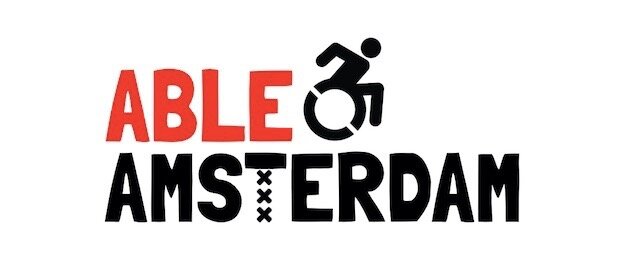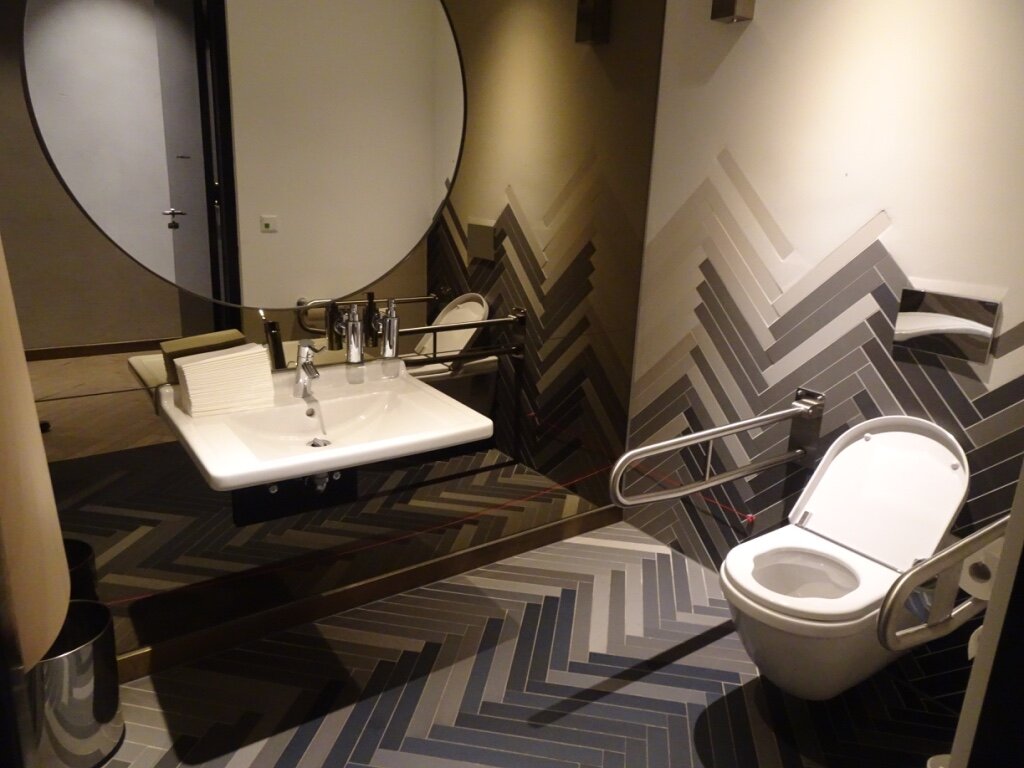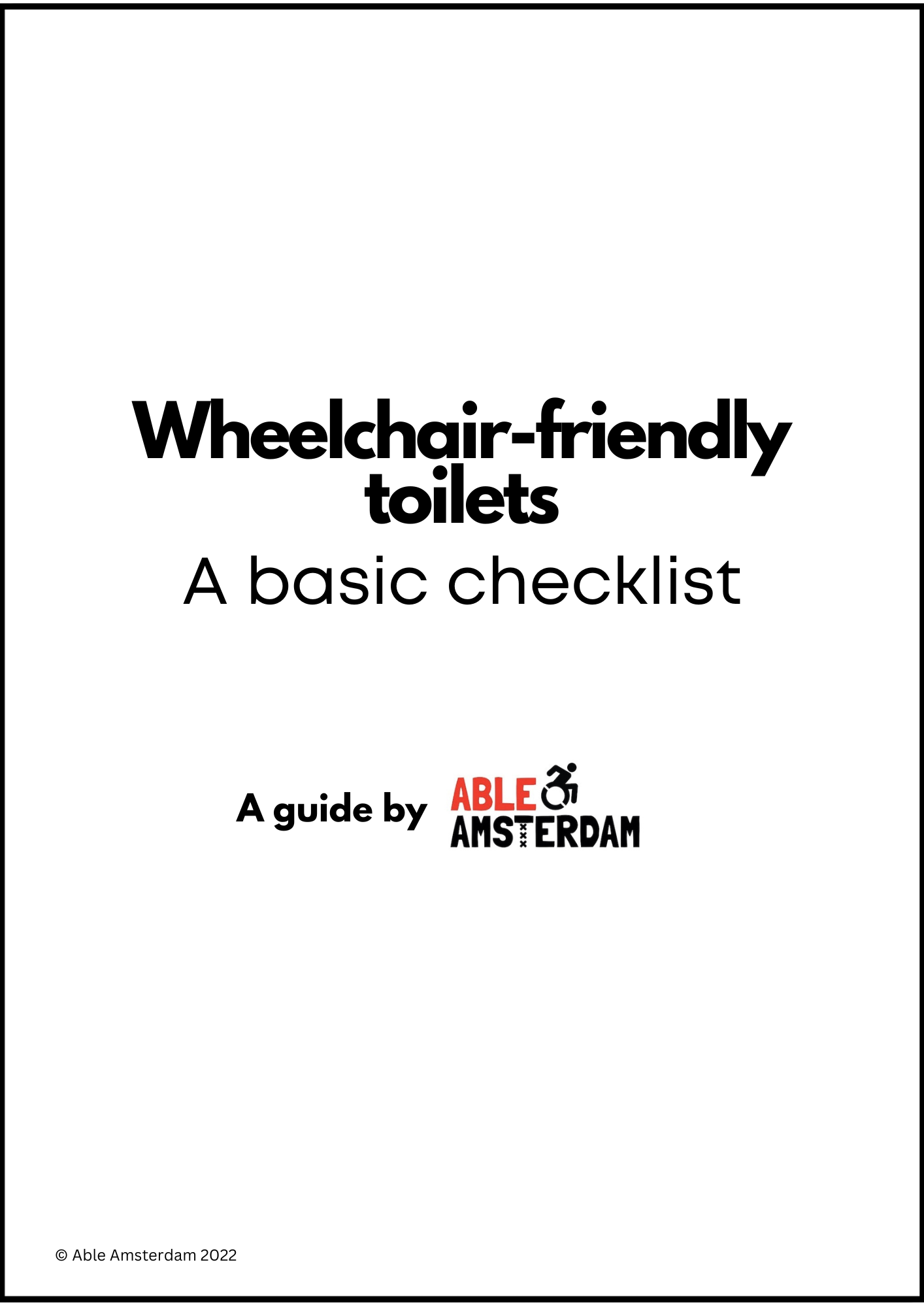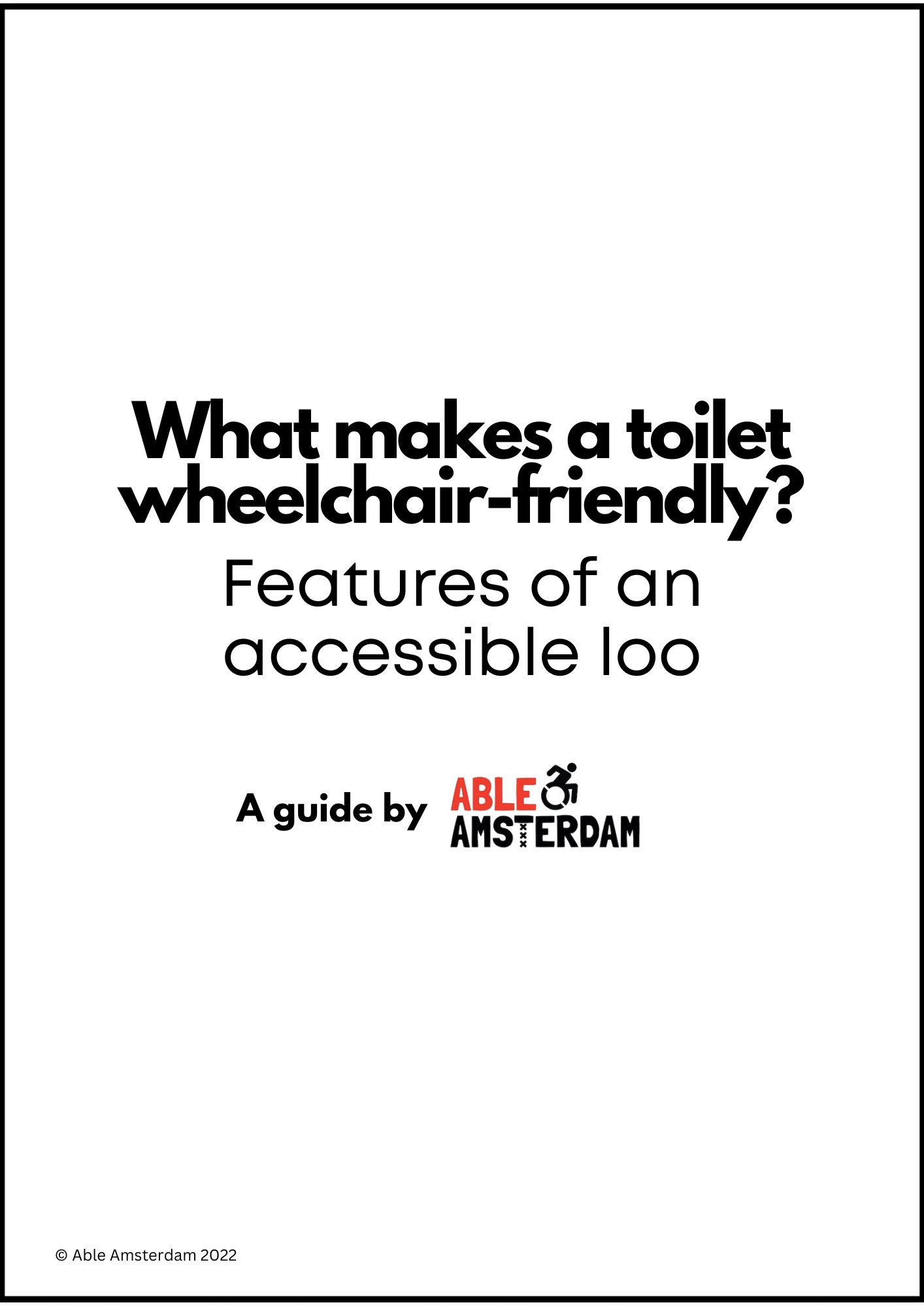How to design a wheelchair-friendly toilet
Disclaimer: I am not a professional with regards to the specifications for accessible toilets. However, based on personal experience as a mobility aid user, I consider the criteria below important. The information in this post should serve as a guide in combination with expert advice.
Accessible toilets are an absolute necessity for many people living with a disability. A crucial part of inclusive spaces, their design features allow wheelchair users and individuals with a range of (physical) disabilities to use the toilet as independently and safely as possible.
Below you’ll find a checklist with important considerations when designing a wheelchair-friendly toilet:
Entrance
Is the doorway wide enough for a wheelchair user to pass through? (min. 80 cm / 32 inches wide)
Is the doorway threshold-free?
Is the door lightweight?
Does the door have a horizontal bar across the inside (along its full width) to help close it?
Does the door open outwards, allowing safe and easy access in an emergency?
Support
Are there grab rails on both sides of the toilet?
Is the toilet seat raised?
Amenities
Is the mirror low enough for wheelchair users?
Is the sink low enough for wheelchair users?
Is the soap dispenser within reach for wheelchair users?
Is the paper towel dispenser/ hand dryer within reach for wheelchair users?
Is the bin within reach for wheelchair users?
Is the toilet paper within easy reach when seated on the toilet?
Is the paper towel dispenser/ hand dryer close enough to the sink and bin (so that users don't have to use wet hands on their mobility aids to move between the two)?
Design
Is the tap a design that doesn't require much force to operate?
Is the tap a design that can be used with a closed fist? (Tip: Use a lever design)
Is the bin a design that doesn't require much force to operate?
Is the bin a design that can be used with a closed fist?
The bin does not require the use of feet/ legs to operate (i.e. it is not a foot pedal bin).
The bin is large enough to dispose of diapers, stoma bags or other larger waste/ sanitary items.
Space
Is the toilet spacious enough to turn at least 1.5 m full circle in a wheelchair?
Is the space underneath the sink free, allowing a wheelchair user to roll right up to it?
The accessible toilet is not being used for storage space.
Safety features
Is there an emergency alarm cord inside the toilet?
Does the emergency alarm cord go around the whole parameter of the accessible toilet?
Is the emergency alarm cord strung along the wall approx. 40 cm from the ground?
Is the emergency alarm cord system fully functioning?
Are staff members well-trained in responding to the emergency alarm system?
Signposting
Is the way to the accessible toilet clearly signposted with a wheelchair icon?
Is the door to the accessible toilet clearly signposted with a wheelchair icon?
Is all signposting clearly visible from afar?
While you’re here, why not browse through some other blog posts?
Free Downloadable PDFs
Able Amsterdam has a variety of free downloadable PDF documents about wheelchair accessibility. Click on the image below for a free summary of this blog post:
Useful links
“Disabled toilets: When does accessible not mean accessible?“ by Gemma-Louise Stevenson (BBC News)
“ADA Checklist for Existing Facilities“ by ADA Checklist.org
“Managing Accessible Toilets” by the Centre for Accessible Environments
accessaloo, an app that allows users to share information and locate accessible toilets around the globe.



